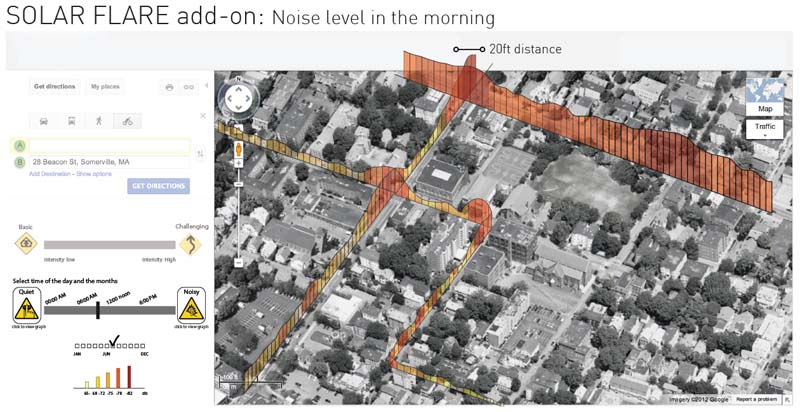Andrew Manto
howtomakealmostanything
Home Week 01 Final Project Proposal Week 02 Laser Cutting Press Fit Week 03 Integrated Circuit Programming Week 04 3d Printing and Scanning Week 05 Circuit Board Design Week 06 Molding and Casting Week 07 Programming Week 08 Make Something Nice Week 09 Input Devices Week 10 Composites Week 11 Output Devices Week 12 Interface and Application Programming Week 13 Networking Week 14 Final ProjectWEEK 14 // Final Project
My final project proposal differs greatly from what I orginally had planned. My original idea was to read non-typical data and re-associate it to apply new values to objects. The original idea of the "banana vending machine" was to take the color data from the fruit and the price them according to how ripe they are.
My actual final combines research that I have been doing through the semester on ambient data collection.
The Solar Flare is a bike fender with sensors embedded in it. The sensors record ambient data while a biker rides. This data can then be used to create a more nuanced and useful map for other bikers

I used a CIGS flexible solar panel for this project. Its peak output is ~1.5V @ 600mA in direct sunlight. These panels are lightweight, relatively inexpensive and a pretty weather resistant.

I lasercut these cardboard test rigs to help determain what a good degree of bend for the panel might be.
I also used a GPS sensor with the intent on syncing location and time data with the noise and bump data from the other sensors.

The idea was to log data to an sd card that could then be taken out and plugged into a computer.





That data then could be used to make google map overlays that would tell potential riders additional information about their routes.

In the end, much like most of the things I attempted to produce in this class, it didn't work.
The GPS I ordered never was able to find a fix...this should have been software independant.
I never got around to figuring out the charge control / boost hardware to normalize the current and boost the voltage to 3.7v steady. Also, I never got around to then boosting the voltage steady to 5v to run the Fabduino / Arduino Mini.
I was never able to record any kind of meaningful data from the piezo sensor or the microphone, regardless of what I tried to do. I was just getting random values through the serial monitor.